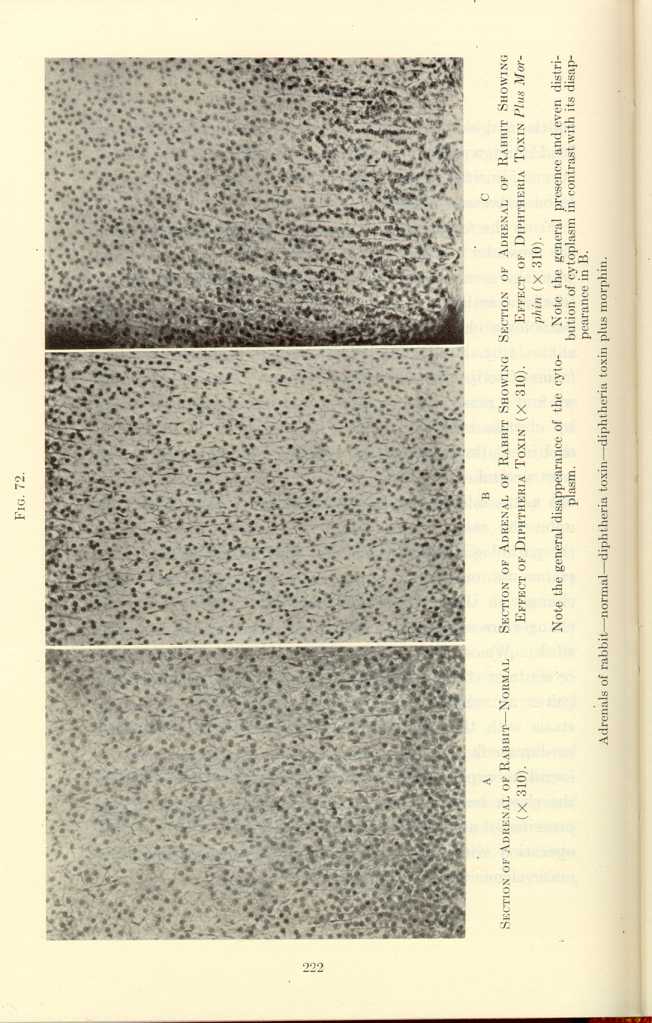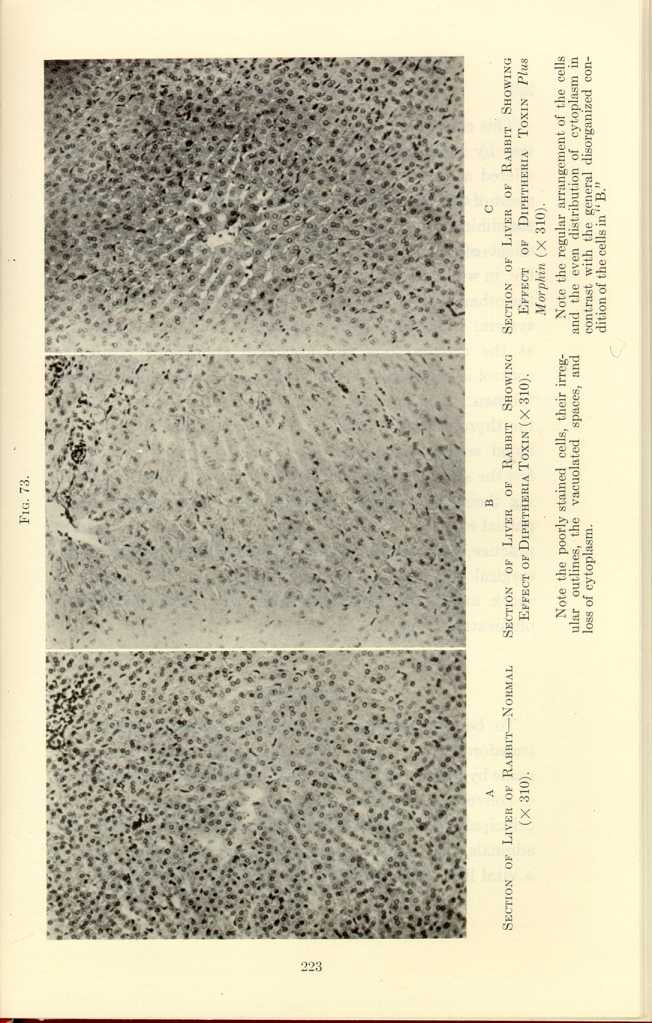| The Origin and Nature of the Emotions: Miscellaneous Papers | ||
Kinetic Diseases
If our conclusions are sound, then in the kinetic system we find an explanation of many diseases, and having found the explanation, we may find new methods of combating them.
When the kinetic system is driven at an overwhelming rate of speed,—as by severe physical injury, by intense emotional excitation, by perforation of the intestines, by the pointing of an abscess into new territory, by the sudden onset of an infectious disease, by an overdose of strychnin,
The essential pathology of shock is identical whatever the cause. If, however, instead of an intense overwhelming activation, the kinetic system is continuously or intermittently overstimulated through a considerable period of time, as long as each of the links in the kinetic chain takes the strain equally the result will be excessive energy conversion, excessive work done; but usually, under stress, some one link in the chain is unable to take the strain and then the evenly balanced work of the several organs of the kinetic system is disturbed. If the brain cannot endure the strain, then neurasthenia, nerve exhaustion, or even insanity follows. If the thyroid cannot endure the strain, it undergoes hyperplasia, which in turn may result in a colloid goiter or in exophthalmic goiter. If the adrenals cannot endure the strain, cardiovascular disease may develop. If the liver cannot take the strain, then death from acute acidosis may follow, or if the neutralizing effect of the liver is only partially lost, then the acidity may cause Bright's disease. Overactivation of the kinetic system may cause glycosuria and diabetes.
Identical physical and functional changes in the organs of the kinetic system may result from intense continued stimulation from any of the following causes: Excessive physical labor, athletic exercise, worry or anxiety, intestinal auto-intoxication, chronic infections, such as oral sepsis, tonsillitis, and adenoids; chronic appendicitis, chronic cholecystitis,
From the foregoing statements we are able to understand the muscular weakness following fever; we can understand why the senile have neither muscular power nor strong febrile reaction; why long-continued infections produce pathologic changes in the organs constituting the kinetic chain; why the same pathologic changes result from various forms of activation of the kinetic system. In this hypothesis we find a reason why cardiovascular disease may be caused by chronic infection, by auto-intoxication, by overwork, or by emotional excitation. We now see that the reason why we find so much difficulty in differentiating the numerous acute infections from each other is because they play upon the same kinetic chain. Our postulate harmonizes the pathologic democracy of the kinetic organs, for it explains not only why, in many diseases, the pathologic changes in these organs are identical, but why the same changes are seen as the result of emotional strain and overwork. We can thus understand how either emotional strain or acute or chronic infection may cause either exophthalmic goiter or cardiovascular disease; how chronic intestinal stasis with the resultant absorption of toxins may cause cardiovascular disease, neurasthenia, or goiter. Here is found an explanation of the phenomena of shock, whether the shock be the result of toxins, of infection, of foreign proteins, of anaphylaxis, of psychic stimuli, or of a surgical operation with its combination of both psychic and traumatic elements.

FIG. 72[m]
A: Section of Adrenal of Rabbit—Normal (x310).
B: Section of Adrenal of Rabbit Showing Effect of Diptheria Toxin
(x310).[n]
C: Section of Adrenal of Rabbit Showing Effect of Diptheria Toxin
Plus Morphin (x310).[o]
[Description: Black-and-white photographs showing adrenal of rabbit under
various conditions.]

FIG. 73.
A: Section of Adrenal of Rabbit—Normal (x310).
B: Section of Adrenal of Rabbit Showing Effect of Diptheria Toxin
(x310).[p]
C: Section of Adrenal of Rabbit Showing Effect of Diptheria Toxin
Plus Morphin (x310).[q]
[Description: Black-and-white photographs showing adrenal of rabbit under
various conditions.]
This conception of the kinetic system has stood a crucial test by making possible the shockless operation. It has offered a plausible explanation of the cause and the treatment of Graves' disease. Will the kinetic theory stand also the clinical test of controlling that protean disease bred in the midst of the stress of our present-day life? Present-day life, in which one must ever have one hand on the sword and the other on the throttle, is a constant stimulus of the kinetic system. The force of these kinetic stimuli may be lessened at the cerebral link by intelligent control—a protective control is empirically attained by many of the most successful men. The force of the kinetic stimuli may be broken at the thyroid link by dividing the nerve supply, reducing the blood supply, or by partial excision; or if the adrenals feel the strain, the stimulating force may be broken by dividing their nerve supply, reducing the blood supply, or by partial excision. No theory is worth more than its yield in practice, but already we have the shockless operation, the surgical treatment of Graves' disease, and the control of shock and of the acute infections by overwhelming morphinization (Figs. 62, 72, and 73).
| The Origin and Nature of the Emotions: Miscellaneous Papers | ||